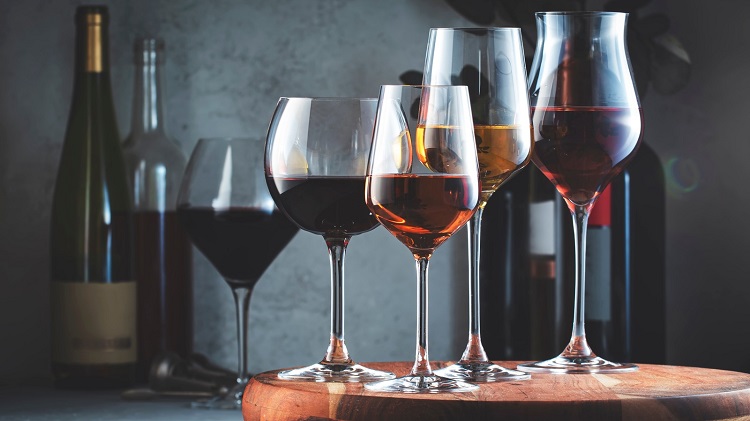
Sharing Wisdom: Pause, Ponder, and Pour a Glass of Red Wine
“Wine brings to light the hidden secrets of the soul, gives being to our hopes, bids the coward flight, drives dull care away, and teaches new means for the accomplishment of our wishes.” – Horace, Roman lyric poet
These words of a poet are probably the best way to express the role of wine in people’s lives. It makes us pause from our ever-so-busy lives, ponder about our hopes and wishes, forget for a moment about our cares and fears, and find the courage to open new doors. This beloved beverage, valued not only for its complex flavours but for centuries of tradition, has the power to push the boundary of reasoning.
From ancient philosophers and poets to modern-day writers, they have all made it explicit – we need to force ourselves to slow down and contemplate the things we tend to overlook. And what better way to do that than with a glass of red wine? So, pour yourself one and read about this perfection of a beverage.
Types of Red Wine

Red wines come in various types, each with its distinct characteristics, derived from the grape variety, region, and production methods. Although wine-making is essentially a simple process that has remained the same since the beginning, different traditions and cultures across the world have different rules as to which grapes are used, how long the wine ages, and what the alcohol level should be. When it comes to the most popular red wine Australia has its favourites. Here are some of the most popular types you can find in a red wine shop:
Shiraz
Accounting for 45 % of red wine variety, and 25 % of total wine production, this is the most popular red wine Australia produces. Some of the oldest Shiraz vines in the world were planted in the Barossa Valley and McLaren Vale in the early 1800s. Shiraz is a full-bodied wine with intense flavours. The blackberry, plum, black pepper, and sometimes smoky or leathery notes, make it an excellent match with grilled meats and dishes with robust flavours.
Cabernet Sauvignon
Originating from Bordeaux, France, Cabernet Sauvignon is known for its bold flavours, tannins, and aging potential. Its black currant, cherry, cedar, and sometimes, herbal notes make it a favourite for many wine lovers. Bold and full-bodied, this wine has relatively low acidity and rich flavour. It pairs well with red meats, rich stews, and aged cheeses.
Merlot
Merlot is known for its smooth, velvety texture and approachable flavour profile. This medium-bodied wine has a taste of plum, red berries, often with a hint of chocolate or vanilla. When it comes to pairing it with food, try it with roast chicken, pork, and pasta dishes.
Pinot Noir
Pinot Noir is famous for its delicacy and lightness. This medium-bodied red has red cherry, strawberry, and earthy notes. The fruity flavours are perfect for game birds, salmon, duck, and mushroom dishes.
Zinfandel
Zinfandel is known for its bold, fruity, and sometimes spicy characteristics. This powerful red has high alcohol levels and medium tannins with a kick of acidity. Blackberry, raspberry, and sometimes peppery or spicy notes make it a rich and slightly sweet wine. A great match for BBQ, spicy foods, and hearty dishes.
Serving Tips
Enjoying red wine to the fullest involves more than just choosing the right type. Here are some essential tips for serving and savouring your red wine.
- Temperature: Serve the wine at the appropriate temperature. Generally, red wines are best enjoyed between 55-65°F (13-18°C). Lighter reds like Pinot Noir are better and slightly cooler, while fuller-bodied wines like Cabernet Sauvignon are best slightly warmer.
- Decanting: Decanting can help aerate the wine, allowing it to open up and release its aromas and flavours. Young and tannic red wines benefit from decanting, while older wines may need gentler aeration to avoid losing their delicate characteristics.
- Glassware: Use the right glass. A wine glass with a wide bowl and a narrow rim is ideal for red wine. The wide bowl allows for aeration, and the narrow rim concentrates the aromas.
- Swirling: Swirl your wine in the glass to release its aromas. This action helps the wine breathe and enhances your tasting experience.
- Pairing: Consider food pairings. Different red wines complement various dishes. Lighter wines go well with lighter fare, while bolder wines are a great match for hearty dishes.
Is Red Wine Good for You?

Red wine has gained a reputation for potential health benefits, primarily attributed to its high content of antioxidants, particularly resveratrol. As long as you drink in moderation, it can do more than make you appreciate the moment. If simply enjoying it is not enough, here are some potential health benefits associated with it:
- Heart Health: Resveratrol, a natural compound found in red wine, may have heart-protective properties. It could help reduce LDL cholesterol, lower blood pressure, and prevent blood clot formation.
- Antioxidants: Natural wine is rich in antioxidants that help combat oxidative stress, reducing the risk of chronic diseases.
- Longevity: Some studies suggest that moderate red wine consumption may be linked to increased lifespan.
- Diabetes: Resveratrol may improve insulin sensitivity, which can be beneficial for individuals with type 2 diabetes.
- Cognitive Function: Moderate red wine consumption has been associated with better cognitive function and a reduced risk of dementia.
- Cancer Prevention: Some research indicates that the antioxidants in red wine may help reduce the risk of certain cancers, such as prostate and breast cancer.
Final Words
Red wine, with its various types and rich history, offers both pleasure and health benefits. Learning to appreciate the nuances of different wine types adds to the experience. It’s crucial to emphasize the term “moderate” when discussing the potential health benefits of red wine. Excessive alcohol consumption can have detrimental effects on your health. The definition of moderate drinking varies but is generally considered to be one to two glasses of red wine per day for women and two to three for men. I say that would do. What do you think?


